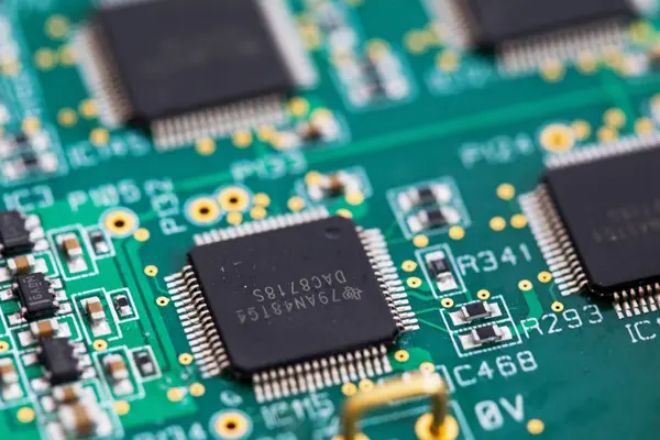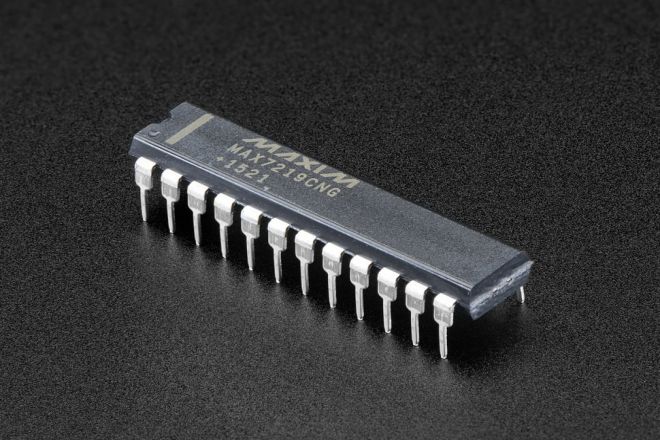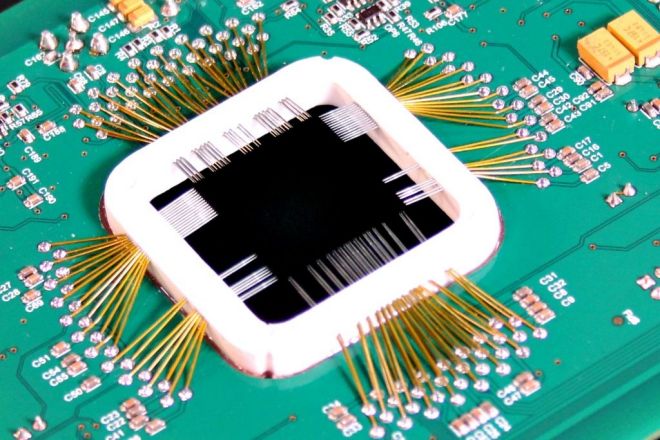مقدمة

في عالم اليوم، حيث تتغير تكنولوجيا العرض الرقمي مع كل يوم يمر، عرض الصمامتُستخدم المصابيح الضوئية على نطاق واسع في مختلف المجالات مثل الإعلانات والمراحل والملاعب وإشارات المرور وما إلى ذلك، مع مزاياها مثل السطوع العالي والعمر الطويل وتوفير الطاقة وحماية البيئة.
ومع ذلك، وراء تأثيرات العرض الرائعة وسيناريوهات التطبيق الواسعة هذه، هناك دعم فني رئيسي - الدائرة المتكاملة (IC). باعتبارها المكون الأساسي لشاشات العرض LED، لا تقوم الدائرة المتكاملة فقط بتشغيل وإيقاف تشغيل كل بكسل LED، بل إنها مسؤولة أيضًا عن نقل البيانات ومعالجتها، وهو مفتاح التشغيل العادي والتشغيل الفعال لشاشات العرض LED.
1. ما هو IC لشاشة العرض LED؟
إن الدائرة المتكاملة لشاشة عرض LED، أي الدائرة المتكاملة (Integrated Circuit)، هي مكون أساسي لا غنى عنه لشاشة عرض LED. إنها بمثابة "الدماغ" و"القلب" لشاشة العرض، حيث تتحكم في تشغيل وإيقاف كل بكسل LED وتضمن أن شاشة العرض يمكن أن تعمل بشكل طبيعي وفعال. فيما يلي الخصائص الوظيفية للدائرة المتكاملة لشاشة عرض LED:
- استقبال البيانات ومعالجتها
تخيل أنك ترسل مقطع فيديو إلى شاشة عرض LED باستخدام هاتفك المحمول. أولاً، يجب أن تستقبل IC لشاشة عرض LED بيانات الفيديو من خلال واجهة تسمى "دبوس إدخال البيانات (DIN)". وفي الوقت نفسه، لضمان تشغيل الفيديو بسلاسة، توجد واجهة تسمى "دبوس إدخال الساعة (CLK)" التي تستقبل ما يسمى "إشارة الساعة"، والتي تشبه المسرع، حيث تخبر IC بموعد تلقي بيانات جديدة.
- ربط البيانات ونقلها
عندما تستقبل الدائرة المتكاملة هذه البيانات، فإنها لن تعرضها على الشاشة فورًا، بل ستقوم أولاً بـ "تثبيتها" للتأكد من عدم فقد البيانات أو حدوث خطأ فيها. هذه العملية تشبه وضع الملفات المهمة في مجلد آمن. بعد ذلك، ستنقل الدائرة المتكاملة هذه البيانات إلى كل بكسل من شاشة LED بطريقة محددة.
- التحكم في الإخراج
عندما تكون البيانات جاهزة للعرض على الشاشة، ستتحكم الدائرة المتكاملة في إخراج البيانات من خلال واجهة تسمى "دبوس تمكين الإخراج (OE)". يمكنك التفكير في هذه الواجهة كمفتاح. عند تشغيلها، ستتدفق البيانات خارج الدائرة المتكاملة مثل الماء ويتم عرضها على شاشة LED.
- التحكم عالي الدقة
ولكن لا يكفي عرض البيانات فقط. نحتاج أيضًا إلى التأكد من أنها تبدو واضحة بدرجة كافية وأن الألوان ساطعة بدرجة كافية. في هذا الوقت، تأتي وظيفة التحكم عالية الدقة في IC في متناول اليد. يمكنها التحكم بدقة في سطوع ولون كل بكسل LED، تمامًا مثل الرسام الذي يخلط الألوان على لوحة. بهذه الطريقة، سواء كنت تريد مشاهدة أفلام عالية الدقة أو إعلانات رائعة، يمكن لشاشة LED تقديمها بشكل مثالي.
2. أنواع الدوائر المتكاملة لشاشات LED

هناك العديد من أنواع الدوائر المتكاملة لشاشات LED، والتي يمكن تلخيصها تقريبًا في الفئات التالية وفقًا للوظائف والاستخدامات المختلفة:
- دائرة السائق
يعد Driver IC أحد المكونات الرئيسية في شاشة LED، وهو المسؤول عن تحويل الإشارة الكهربائية المدخلة إلى إشارة تيار يمكنها تشغيل خرزات مصباح LED. وعادةً ما يكون لها خصائص خرج تيار ثابت أو جهد ثابت لضمان استقرار وثبات شاشة LED.
مثال: MBI5024، هذه شريحة تشغيل LED بمزلاج تحويل 16 بت يمكنها التحكم في تشغيل وإيقاف ما يصل إلى 16 خرزة مصباح LED. تعمل عن طريق إدخال البيانات التسلسلية، ونقل بيانات التحكم في إشارة الساعة، والمزلاج، وأخيرًا التحكم في تشغيل وإيقاف خرزات مصباح LED من خلال منافذ الإخراج المتوازية.
- دائرة التحكم المتكاملة
تكون دائرة التحكم IC مسؤولة بشكل أساسي عن استقبال إشارات البيانات من الخارج وفك تشفيرها ومعالجتها، وإرسالها إلى دائرة التحكم IC للتحكم في محتوى شاشة LED.
على سبيل المثال: TPIC6B595، وهي عبارة عن شريحة تشغيل شاشة LED ذات إدخال تسلسلي وإخراج متوازي، وهي مناسبة لتشغيل شاشات LED البسيطة، مثل الأنابيب الرقمية المكونة من 7 أجزاء، وما إلى ذلك.
- دائرة إدارة الطاقة
تُستخدم دائرة إدارة الطاقة بشكل أساسي في توفير الطاقة وإدارة شاشات العرض LED لضمان التشغيل المستقر لشاشة العرض. وعادةً ما يكون لها وظائف مثل تحويل الطاقة وضبط الجهد والتيار الزائد والحماية من الجهد الزائد.
مثال: يمكن لبعض شرائح تشغيل التيار المستمر ضمان بقاء تيار الإخراج ثابتًا وعدم تأثره بجهد الإدخال ودرجة الحرارة، وهو أمر بالغ الأهمية لاستقرار سطوع وألوان شاشات العرض LED.
- واجهة IC
يتم استخدام واجهة IC لتحقيق الاتصال بين شاشات العرض LED والأجهزة أو الأنظمة الخارجية، مثل استقبال إشارات التحكم، ونقل بيانات العرض، وما إلى ذلك.
على سبيل المثال: MAX7219/MAX7221، وهو برنامج تشغيل شاشة عرض LED شائع الاستخدام مع وظيفة متتالية، يمكنه توصيل برامج تشغيل متعددة من خلال واجهة تسلسلية لتحقيق التحكم في شاشة عرض LED واسعة النطاق.
- الدائرة المتكاملة ذات الوظيفة الخاصة
تم تصميم IC ذات الوظائف الخاصة لتلبية بعض الاحتياجات الخاصة لشاشات العرض LED، مثل ضبط التدرج الرمادي، وتصحيح الألوان، والتحكم الذكي، وما إلى ذلك.
مثال: تحتوي بعض شرائح برنامج تشغيل شاشة العرض LED المتطورة على وظيفة ضبط التدرج الرمادي، والتي يمكنها تحقيق التحكم الدقيق في سطوع حبة مصباح LED، وبالتالي تحسين تأثير العرض.
عند اختيار IC لشاشة عرض LED، من الضروري إجراء اعتبارات شاملة بناءً على سيناريوهات التطبيق والاحتياجات المحددة لضمان استقرار وأداء شاشة العرض. في الوقت نفسه، مع التطوير المستمر لتكنولوجيا شاشة LED، ستستمر منتجات وتقنيات IC الجديدة في الظهور، مما يوفر المزيد من الاحتمالات لتطبيق شاشات عرض LED.
3. تأثير تقنية IC على أداء شاشات العرض LED
باعتبارها المكون الأساسي لشاشات العرض LED، فإن تقنية IC لها تأثير حيوي على أداء شاشات العرض. فيما يلي العديد من الجوانب الرئيسية لتأثير تقنية IC على أداء شاشات العرض LED:
- تأثير العرض:
يمكن أن توفر الدوائر المتكاملة عالية الأداء معدلات تحديث أعلى. يشير معدل التحديث إلى عدد المرات التي تقوم فيها شاشة العرض LED بتحديث الصورة في الثانية. يمكن لمعدل التحديث العالي ضمان سلاسة واستمرارية الصورة، خاصة عند تشغيل مقاطع فيديو ديناميكية أو عرض مشاهد حركة عالية السرعة؛ ويمكنه تجنب تمزيق أو تشويش الصورة، مما يجعل الصورة أكثر وضوحًا وواقعية.
تدعم الدوائر المتكاملة عالية الأداء أيضًا مستويات تدرج رمادي أعلى. تشير مستويات تدرج الرمادي إلى مستويات الألوان ونطاق تباين السطوع الذي يمكن لشاشات العرض LED عرضه. يمكن لمستويات تدرج الرمادي الأعلى تقديم ألوان أكثر دقة وثراءً وتغييرات في الضوء والظلام، مما يجعل الصورة أكثر حيوية وواقعية.
- استهلاك الطاقة والحياة:
يمكن أن يقلل تصميم IC المحسن من استهلاك الطاقة لشاشات العرض LED. من خلال اعتماد تكنولوجيا إدارة الطاقة المتقدمة وخوارزميات توفير الطاقة، يمكن لـ IC التحكم بدقة في التيار والجهد لخرزات مصباح LED، وتجنب إهدار الطاقة غير الضروري، وبالتالي تقليل استهلاك الطاقة الإجمالي لشاشة العرض.
وهذا لا يساعد فقط على خفض تكاليف التشغيل، بل يساعد أيضاً على خفض استهلاك الطاقة والتلوث البيئي.
يمكن أن يؤدي تصميم IC المحسن أيضًا إلى إطالة عمر خدمة مصابيح LED. من خلال التحكم الدقيق في حالة عمل حبات مصباح LED، يمكن لـ IC تقليل عوامل التلف مثل ارتفاع درجة حرارة مصابيح LED وزيادة الجهد الكهربي لها، وتقليل معدل فشل مصابيح LED، وبالتالي إطالة عمر خدمة الشاشة.
بالإضافة إلى ذلك، يمكن لـ IC أيضًا تحقيق وظيفة الكشف والاستبدال التلقائي لخرزات مصباح LED، مما يعمل على تحسين موثوقية واستقرار الشاشة بشكل أكبر.
- مصداقية:
تتمتع الدوائر المتكاملة عالية الجودة بقدرات أقوى في مقاومة التداخل. وفي بيئة كهرومغناطيسية معقدة، تستطيع الدوائر المتكاملة عالية الجودة مقاومة تأثير إشارات التداخل المختلفة وضمان التشغيل المستقر للشاشة.
يساعد هذا على تجنب الوميض والشاشة السوداء وظواهر الفشل الأخرى على الشاشة ويحسن موثوقية الشاشة واستقرارها.
تتمتع الدوائر المتكاملة عالية الجودة أيضًا بثبات وموثوقية أعلى. ومن خلال تبني العمليات والمواد المتقدمة، يمكن للدوائر المتكاملة الحفاظ على أداء مستقر في البيئات القاسية مثل درجات الحرارة العالية والرطوبة العالية والاهتزاز، مما يضمن أن تعمل الشاشة بشكل طبيعي في بيئات معقدة مختلفة.
علاوة على ذلك، تتمتع الدوائر المتكاملة عالية الجودة أيضًا بمعدلات فشل أقل وعمر خدمة أطول، مما يحسن بشكل أكبر من موثوقية واستقرار الشاشة.
4. اتجاهات التنمية المستقبلية

في مجال شاشات العرض LED، تعد تقنية IC هي القوة الدافعة الأساسية، وسوف يقود اتجاه تطويرها المستقبلي الصناعة بأكملها نحو الأداء الأعلى والتنمية الخضراء والذكية. فيما يلي العديد من اتجاهات التطوير الرئيسية:
- الذكاء والتكامل:
مع التكامل المستمر لتقنيات مثل إنترنت الأشياء والبيانات الضخمة والذكاء الاصطناعي، ستصبح شاشات LED أكثر ذكاءً. ستحقق تقنية IC مستوى أعلى من التحكم الذكي، مثل ضبط السطوع التكيفي، والتوصية الذكية بالمحتوى، والتحكم عن بعد، وما إلى ذلك.
بحيث يمكن لشاشة العرض ضبط معلمات العرض تلقائيًا وفقًا للبيئة وسيناريوهات الاستخدام وتوفير تجربة مستخدم أكثر ذكاءً وراحة.
في الوقت نفسه، يعد التكامل أيضًا اتجاهًا مهمًا للتطوير المستقبلي. من خلال دمج وظائف متعددة في شريحة IC واحدة، يمكن تبسيط بنية النظام وتحسين موثوقية النظام واستقراره.
على سبيل المثال، قد يؤدي دمج وظائف مثل القيادة والتحكم وإدارة الطاقة في شريحة واحدة إلى تقليل تعقيد النظام وتكلفته بشكل كبير.
- توفير الطاقة الخضراء:
مع تزايد الاهتمام العالمي بحماية البيئة وتوفير الطاقة، ستتطور شاشات LED في اتجاه أكثر خضرة وتوفيرًا للطاقة. ستلعب تقنية IC دورًا رئيسيًا في هذه العملية، حيث تحقق استهلاكًا أقل للطاقة وعمر خدمة أطول من خلال تحسين الخوارزميات وتقليل استهلاك الطاقة وتحسين كفاءة استخدام الطاقة.
على سبيل المثال، من خلال استخدام تكنولوجيا إدارة الطاقة المتقدمة وخوارزميات توفير الطاقة، يمكن لـ IC التحكم بدقة في التيار والجهد الكهربي لمصابيح LED لتقليل هدر الطاقة غير الضروري.
وفي الوقت نفسه، يمكن لوظيفة توفير الطاقة الذكية أيضًا ضبط سطوع ولون الشاشة تلقائيًا وفقًا للبيئة وسيناريوهات الاستخدام، مما يقلل من استهلاك الطاقة بشكل أكبر.
- التخصيص والتخصيص:
مع استمرار تقسيم السوق وتنوع احتياجات المستهلكين، سيولي سوق شاشات LED المزيد من الاهتمام لاحتياجات التخصيص والشخصنة. ستوفر تقنية IC دعمًا قويًا لتحقيق هذا الطلب.
من خلال تصميم IC القابل للتكوين والتحكم المرن في البرامج، يمكن تخصيص شاشات LED وفقًا لسيناريوهات التطبيق المختلفة واحتياجات المستخدم. على سبيل المثال، يمكن تخصيصها وفقًا لأحجام الشاشة المختلفة والدقة والسطوع والألوان والمعلمات الأخرى لتلبية احتياجات العرض في المناسبات المختلفة.
في الوقت نفسه، يمكن لتقنية IC دعم مجموعة متنوعة من واجهات البيانات وبروتوكولات التحكم، مما يجعل من الملائم للمستخدمين الاتصال والتحكم في الأجهزة الخارجية المختلفة.
خاتمة
من خلال التحليل أعلاه، ليس من الصعب أن نرى أن IC تلعب دورًا حيويًا في شاشات LED. فهي ليست فقط الأساس للتشغيل العادي لشاشات LED، بل هي أيضًا المفتاح لتحسين أداء الشاشات وتحقيق العديد من الوظائف المتقدمة. مع التقدم المستمر للتكنولوجيا والتغيرات في الطلب في السوق، سيكون تطبيق IC في مجال شاشات LED أكثر شمولاً وعمقًا في المستقبل.
أخيرًا، إذا كنت تريد معرفة المزيد عن شاشات LED، يرجى الحصول على اتصال معنا.

رد واحد
آي سي